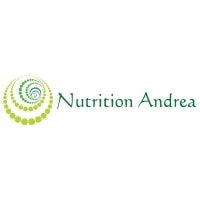 Unlike many signs of aging, and menopause, joint pain may not diminish once you rest the joint or after hormones level out after menopause. But there are many lifestyle changes that can help ease the pain and prevent it from getting worse. Fill up on anti-inflammatory foods. Some foods tamp down inflammation while others spur it on. For the right balance, eat more of these inflammation fighters: berries, broccoli, avocado, tomatoes, green leafy vegetables like spinach and kale, citrus fruits, cherries, fatty fish like salmon, olive oil, nuts, dark chocolate (in moderation), olive oil, green tea, turmeric, and ginger. And avoid foods that contribute to inflammation such as refined carbs like white bread and cake, fried foods, red meat and processed meats like hot dogs, soda and other sugary beverages, and foods with trans fatty acids like margarine. Get some exercise. Regular movement keeps joints lubricated so they flex and extend more easily and with less pain. Low-impact activities like yoga, walking, swimming, and cycling are gentler on the joints than high-impact sports like running. Keep tabs on your weight Excess weight puts stress on your joints as you move, so losing even a few pounds can mean exponential relief for weight bearing joints like hips and knees. Lift some weights. Strengthening the supporting muscles around a joint provides stability. When joints are stable, they function better, and you have less risk of damage or an injury. Stay hydrated. Drink plenty of water to keep tissues moist and supple. In menopause, your body doesn’t retain water as well as it used to, so it’s important to replace the lost moisture. Water—not sports drinks, sodas, or coffee—is your best choice. If you need variety, add a few pieces of fruit for flavor. Build in stretch breaks. Too much sitting or computer time? At regular intervals, for instance every 20 or 30 minutes, stop what you’re doing and move. If sitting, stretch your forearms, do some wrist circles, or squeeze a soft ball. Get up from your desk and march in place and then stretch your legs and hips. The motion will help to keep your joint lubricated and minimize stiffness and pain. Strengthen your core. Your body is one long chain of joints and muscles, and weakness at one part affects others. When the core muscles in your abdomen, back, hips, and buttocks are strong, it can help to take pressure off joints throughout the body. De-stress. We know, we probably sound like a broken record, but when it comes to joint pain, stress is especially problematic. Stress raises cortisol levels, and cortisol can cause additional inflammation in joints. Do what you can to keep stress in check. If stressed, consider taking a walk — in nature is best for a triple crown of stress reduction - nature, time away, and moderate exercise. If going outside is not an option, close your eyes and take 4-5 deep breaths. You’ll feel the difference! Consider supplements. Magnesium may help. According to the Arthritis Foundation, "Magnesium strengthens bones; maintains nerve and muscle function; regulates heart rhythm and blood sugar levels; and helps maintain joint cartilage." Other good options are glucosamine and chondroitin, fish oil [omega 3 fats], turmeric, or ginger. Apply ice and/or heat. Which you choose may be a personal preference. Generally, ice helps when there’s obvious inflammation (swelling, redness). It may also ease achiness after exercise, or you might simply find that it numbs your pain anytime. Heat loosens muscles, enhances flexibility, and increases circulation. For these reasons, heat (heating pad, warm shower, paraffin wax) may be helpful when used before exercise. Apply either for no more than 20 minutes at a time and protect your skin by having something like a thin towel between your body and the ice pack or heating pad. Rub on relief. Topical pain relievers like Arnicare and Biofreeze can tame the pain. In addition, lightly touching and massaging the area, even with regular lotion, may help desensitize you to the pain.
0 Comments
Leave a Reply. |
AuthorWrite something about yourself. No need to be fancy, just an overview. Archives
October 2024
Categories |

 RSS Feed
RSS Feed